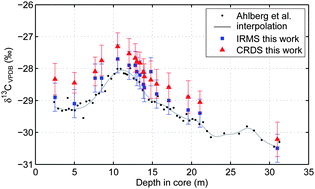Precise and accurate δ13C analysis of rock samples using Flash Combustion–Cavity Ring Down Laser Spectroscopy
Abstract
The ratio of 13C to 12C in marine sedimentary rocks holds important clues to the evolution of the carbon cycle through Earth history. Isotopic analyses are traditionally carried out using


 Please wait while we load your content...
Please wait while we load your content...